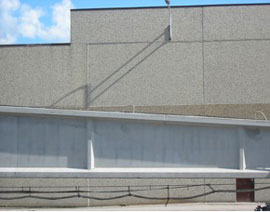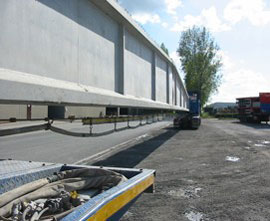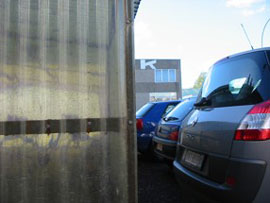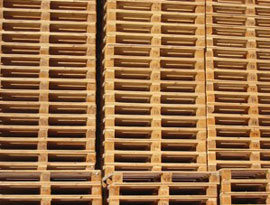|
zoning ensemble
performances with plochingen, anton aeki and frederik dewilde since 2005 |
|
|
|||||
|
the zoning project – the zoning quartet – the zoning film Zoning is a multidisciplinary art project. Subject are the contemporary industrial zones around cities. Subject is the division in zones itself. Zoning is a long-term collaboration between artists: music, video, film, photography, text, urbanism,...
url: http://constant.all2all.org/~mgh/zoning-site/UntitledFrame-1.htm Zoning? (french for industrial zone) Production and economic streams are organised worldwide. This has an enormous influence on human and urbanistic organistion. Zones, in a larger sense, have their social, political and economic implications. To give a concrete example, more and more people have to travel to go to their work, which makes a tissue of highways and speedways necessary, which make a steady supply of oil indispensable. On a bigger level, other people have to migrate to places where work is available and where they will make a living (house, school, shopping). Apart from the issue of efficiency, and rationalisation of human activity (at work as well as in private life), a often found connotation with ‘zoning’ is the idea that a)cities are evil b)nature is good. This idea was most notably formulated in the XIXth century, by people commenting on the rural exod of that period. These commentors saw the workers as victims coming from their idyllic countryside to overpopulated cities where they would soon loose their innocence. Cities, seen as cesspool of evil by these authors, were places to escape from, to be voided and destroyed if necessary. From Dickensian visions of hell to genuine interest in the life of the proletariat, through right-wing diatribes against the "liberal, morally corrupted cities" or ecologist back-to-nature options, a second exod will leave the cities to (over-)populate suburbs and finally build the modern day sprawls. Utopian architects such as Claude-Nicolas Ledoux and Etienne-Louis Boullée, amongst others, were aware of the new social order coming with the industrialisation of the XVIII century. British suburb architecture in the 19th century and again later people around ‘Nieuwe Zakelijkheid’, Bauhaus and, not least, Le Corbusier pushed the division of the urban structure in zones with distinct functions. Around the globe one will find nowadays zones for shopping and industrial activities around every city. Project! Workshops & events Lectures about related subjects such as noise pollution, the measuring of sound, urbanism (sven?) or an artist talk can be organised on request (E, FR, NL) It would be nice let schools, organisation and workers from nearby industrial zones participateon an informal way. A list of lectures around the zoning theme can be provided at request. The Zoning project was founded by Aernoudt Jacobs, Johan Vandermaelen, Frederik Dewilde, Benoit Deuxant, and Roland Wouters. From the very start it was clear that a multidisciplinary approach would be the most appropriate for working around the zoning theme. The complexity of the ‘zonation’ of our world and life is an open invitation for artists and scientists. Each in their own way they can reveal parts of the zoning concept. Together with documentation related to the subject, their work, video, photographs, texts will be presented in a room next to the concert place. A certain amount of "theoretic" support will insist on particular aspects of the project, as an artistic endeavour, as well as a social and critical work. The project is supposed to grow from one presentation to another, collaborations, especially cross-disciplinary, will of course be encouraged. The project will collect works and documents, with the purpose of constructing a corpus that can be used differently according to the context. It will contain sound, pictures and other medias that can be presented in various combinations, always with the Zoning Quartet as central proposition. Quartet The Zoning project is centered around the Zoning quartet: Benoit Deuxant, Aernoudt Jacobs, Johan Vandermaelen and Roland Wouters. They are fascinated by the specificity of the industrial zones. But they are fascinated in different ways by these zones One will focus more on – to say it with Marc Augé – the non-space it represents, some see something from Husserl’s phenomenology appropriate, and still there are toughts about politics, economy and social organisation. Luckily they also have a sharp ear to what happens when they are in a zoning. They are musicians first of all. As you can see in their bio in attachment, the members of the Zoning quartet have a long time affinity with electro-acoustic music. They bundle their forces, make recordings on the sites together. They try to find some zonings in the neighbourhood of the concert venue. They search for site specific sound. They like to play with this contradiction: what is typical for the non-site they’re in? During the concert they manipulate the collected sounds by means of laptops and other electronics. A Quartet means they are four to select fragments, to decide how far they go in the direction of a reconstitution ( dynamics, level, spatialisation) or if, and how much, they will allow a distortion (pitch, tonal ballance, composition, etc.) in order to create a stimulus, to achieve an awareness towards the subject: zoning – in the largest sense of the word. Great care is given to the possibility of spatial distribution of the sounds; in 3D, with an accurate volume setting. One can hardly speak from a concert in a traditional way, it’s more of a unique experience composed out of the recorded sounds. Film Frederik De Wilde's contribution to the "ZONING" project is a shortfilm & video installation which will focus on the notion of borders. What happens when they become mentally and physically absolute? Yet invisible. Maybe we can nevertheless still touch its surface? This is the point of departure. The physical gesture of touching and penetrating the physical space through the movement of the camera. Thus, linking a physical space to a body's surface, a space which is both perceived and felt. The idea is to scan the Zones in 360° panoramic shots. The moment that a building occurs; the camera zooms in on the building while revealing the interior layers of the particular building. The Zoning Quartet will provide the nessecary sound.
|



